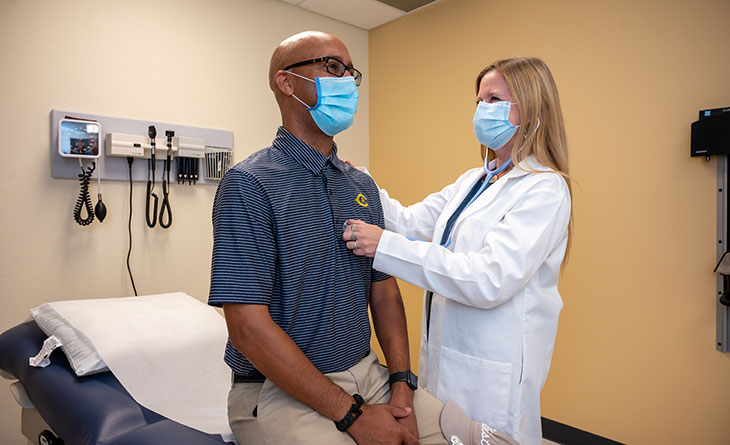Understanding the Crucial Role of Medical Care in Comprehensive Health Management and Illness Avoidance Techniques
The important function of health care in comprehensive health management and illness avoidance approaches can not be overemphasized, as it functions as the structure for effective medical care shipment. By prioritizing precautionary treatment and promoting long-lasting patient-provider partnerships, health care specialists are distinctively placed to attend to specific health requirements while additionally influencing wider community health results. The intricacies and challenges encountered in the application of these strategies elevate vital concerns regarding just how ideal to enhance primary care's performance. What ingenious approaches might boost its influence on both individual and public wellness?
Definition of Key Treatment
Although the principle of medical care might differ across different medical care systems, it basically describes the very first factor of contact for people within the health care continuum. Medical care incorporates a wide range of services, including precautionary care, diagnosis, therapy, and monitoring of persistent conditions. It is characterized by its thorough, accessible, and worked with method, making certain patients get all natural care customized to their individual needs.
Medical care suppliers, usually family physicians, internists, or doctors, play an important function in developing continuous patient-provider connections. This continuity of treatment fosters count on and promotes much better health end results via normal tracking and tailored interventions. The emphasis on a patient-centered approach permits the consideration of social, economic, and psychological aspects that affect wellness.
Moreover, main care works as a vital part in browsing the health care system, leading individuals via specialized solutions when necessary. By functioning as a main center for health monitoring, primary care not only addresses instant medical worries but additionally highlights the significance of overall health and safety nets. Thus, its meaning expands beyond mere treatment to include a detailed structure for health and wellness promo and disease prevention.
Advantages of Preventive Treatment
Precautionary treatment deals many advantages that dramatically improve private and community wellness end results. By focusing on the prevention of diseases and wellness problems before they occur, precautionary treatment minimizes the incidence of significant health problems, thereby decreasing healthcare expenses in time. Early detection through regular screenings and evaluations allows for prompt interventions, which can avoid the development of diseases, leading to boosted high quality of life for patients.
In addition, precautionary treatment promotes wellness education and learning and awareness, empowering people to make enlightened decisions concerning their lifestyles and wellness behaviors. This positive strategy urges routine exams, vaccinations, and health and wellness screenings, which not just profit people yet also add to the general health and wellness of the community. By reducing the concern of chronic diseases and avoiding outbreaks of infectious diseases, preventative treatment plays a vital function in boosting public wellness.
In enhancement to enhancing private health outcomes, preventative treatment promotes an extra effective medical care system by reducing the need for extensive treatments and hospital stays. Inevitably, spending in preventive care is essential, as it helps with much healthier populaces, lowers health disparities, and makes sure better resource allocation within the healthcare system.
Duty in Chronic Condition Monitoring
The aggressive strategies used in preventative treatment are crucial in the management of persistent conditions, which commonly call for ongoing interest and sources. Health care providers play a pivotal function in this context, working as the initial factor of call for clients with persistent conditions such as diabetic issues, hypertension, and heart condition. They contribute in developing individualized administration plans that include normal tracking, medication administration, and way of life click this site adjustments.

Furthermore, primary treatment companies frequently utilize innovation and information analytics to track individual progression and recognize possible complications early. This aggressive surveillance improves individual interaction and empowers people to take an active role in their wellness monitoring. Eventually, the integration of health care into chronic disease administration promotes improved lifestyle and lowers the worry over here on health care systems.
Patient-Provider Relationships

Additionally, a robust patient-provider rapport boosts patient engagement and self-management. Carriers who spend time in comprehending their patients' histories, preferences, and inspirations are better outfitted to sustain them in handling their problems. This tailored approach can lead to improved health outcomes, as individuals are much more likely to adhere to suggestions when they feel valued and understood.
In addition, continuity of treatment plays a considerable duty in strengthening these partnerships. Normal communications in between people and carriers help with ongoing evaluation and modifications to treatment plans, which see this website is important for managing persistent diseases properly. This continuity not only advertises better health and wellness end results however additionally decreases medical care costs by lessening the requirement for urgent interventions.
Impact on Neighborhood Health
Strong patient-provider partnerships significantly influence community health and wellness outcomes, as they contribute to a much more engaged and notified populace. primary care provider. When individuals really feel connected to their key treatment suppliers, they are extra most likely to seek preventive solutions, adhere to therapy strategies, and join health-promoting behaviors. This engagement cultivates a culture of health, where people prioritize their health and wellness and the health of their area
Furthermore, efficient communication in between individuals and carriers boosts wellness literacy, empowering individuals to make enlightened decisions concerning their care. This increased understanding can bring about reduced rates of persistent diseases, as people ended up being proactive in managing their health. Additionally, solid connections help with the identification of community-specific wellness challenges, making it possible for suppliers to tailor treatments that attend to neighborhood requirements.
Moreover, medical care acts as an important access factor for health and wellness sources, attaching people with essential services and support networks. This extensive approach not just boosts specific wellness however also reinforces community cohesion, as citizens function collaboratively to address health and wellness differences. On the whole, the impact of durable patient-provider relationships extends past the clinic, promoting healthier areas and contributing to a lasting healthcare system.
Final Thought
In recap, key care is basic to effective wellness management and illness avoidance - nauseous nauseated. Ultimately, the integration of key treatment into area health and wellness strategies leads to enhanced health and wellness end results and decreased medical care costs, emphasizing its essential role in promoting overall community wellness.
 Kel Mitchell Then & Now!
Kel Mitchell Then & Now! Loni Anderson Then & Now!
Loni Anderson Then & Now! Justine Bateman Then & Now!
Justine Bateman Then & Now! Tina Louise Then & Now!
Tina Louise Then & Now! Pierce Brosnan Then & Now!
Pierce Brosnan Then & Now!